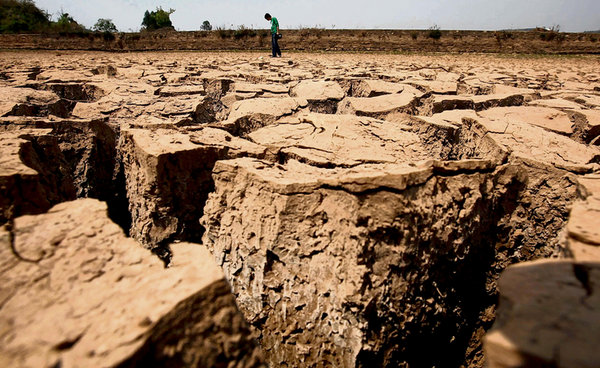
The drought in the provinces of Yunnan, Guizhou, and Sichuan, as well as the Guangxi Autonomous Region and the city of Chongqing, has forced local governments to tap underground water sources and use cloud seeding to produce rain for agricultural production.
More than 20 million people throughout the southern region are dealing with water shortages and about 16 million acres of cropland are suffering from drought, the China Daily newspaper reported. Many areas have declared a state of emergency.
China's State Commission of Disaster Relief said the drought had left more than 16 million people and 11 million livestock with drinking-water shortages.
About 4.348 million hectares of farmland were affected and 940,200 hectares would yield no harvest, the commission said in a statement.
Since autumn last year, southwest China, including Yunnan, Sichuan, Guizhou, Guangxi and Chongqing, has received only half its annual average rainfall and water stores are depleted.
Meanwhile, the capital was dusted with sand and people were advised to wear masks when going out, and to only go outdoors if they had to. The air was given "hazardous" status - very rare in the capital where real air quality readings are a close-guarded secret.
China is struggling with the effects of desertification and one third of the country is now covered in sand - the combined effect of deforestation, urban development, drought and overgrazing.
Sand from China turns up on the windscreens of cars in Los Angeles.
The worst recent sandstorm to hit Beijing was in 2006, when about 300,000 tons of sand were dumped on the capital.
Ma Kefei (42), an IT lecturer, said the worst sandstorm she could recall was in 1987.
"On that day, the day became totally dark! Truly dark! You could not see anything. Dust, sand and small stones were in the air. In the early 1990s, Beijing had so many construction sites. So every year around 1995 on, Beijing had very worst sandstorms. But recently, they are getting better," she said.
The Chinese Academy of Sciences has estimated that the number of sandstorms has jumped six-fold in the last half-century to 24 a year.
Jiang Cheng (28), a public servant, has lived in Beijing for 10 years. "Yesterday, when I woke up, the air was red. So horrible. And I heard the wind blowing. The outside world was totally red! I went outside because I had to do my shift. And the time I stepped outside, I regretted going out.
My face was full of sand in a very short moment. I could not see clearly," he said. "I am not sure if it is getting worse or better."



Reader Comments
to our Newsletter